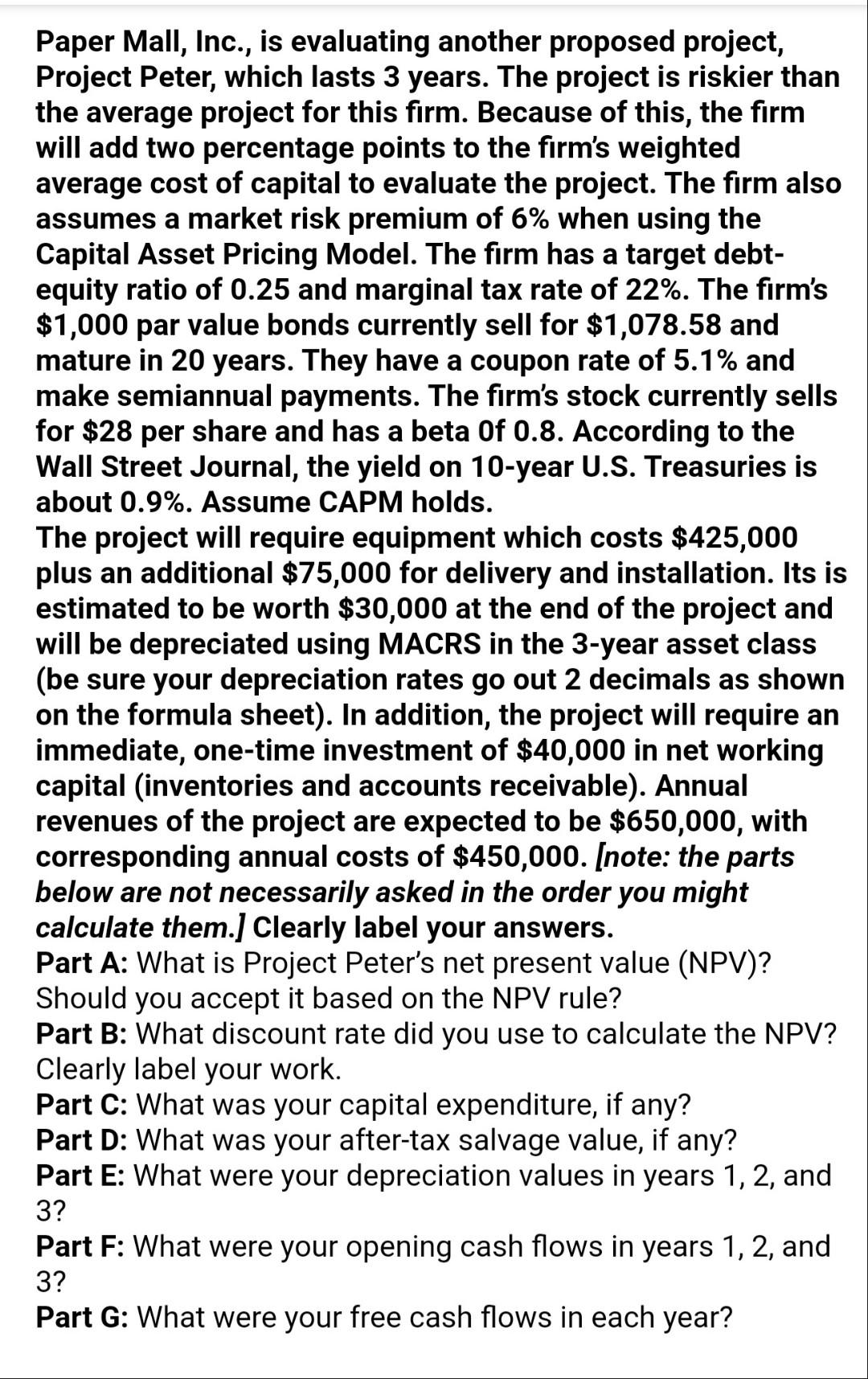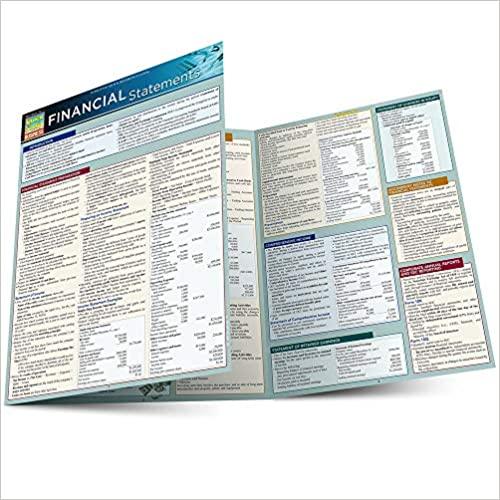Answered step by step
Verified Expert Solution
Question
1 Approved Answer
No excel answers whatsoever. Step by step work. Please provide the following format when answering question if applicable. N I/Y PMT FV PV Paper Mall,

No excel answers whatsoever. Step by step work. Please provide the following format when answering question if applicable.
N I/Y PMT FV PV
Paper Mall, Inc., is evaluating another proposed project, Project Peter, which lasts 3 years. The project is riskier than the average project for this firm. Because of this, the firm will add two percentage points to the firm's weighted average cost of capital to evaluate the project. The firm also assumes a market risk premium of 6% when using the Capital Asset Pricing Model. The firm has a target debt- equity ratio of 0.25 and marginal tax rate of 22%. The firm's $1,000 par value bonds currently sell for $1,078.58 and mature in 20 years. They have a coupon rate of 5.1% and make semiannual payments. The firm's stock currently sells for $28 per share and has a beta of 0.8. According to the Wall Street Journal, the yield on 10-year U.S. Treasuries is about 0.9%. Assume CAPM holds. The project will require equipment which costs $425,000 plus an additional $75,000 for delivery and installation. Its is estimated to be worth $30,000 at the end of the project and will be depreciated using MACRS in the 3-year asset class (be sure your depreciation rates go out 2 decimals as shown on the formula sheet). In addition, the project will require an immediate, one-time investment of $40,000 in net working capital (inventories and accounts receivable). Annual revenues of the project are expected to be $650,000, with corresponding annual costs of $450,000. (note: the parts below are not necessarily asked in the order you might calculate them.] Clearly label your answers. Part A: What is Project Peter's net present value (NPV)? Should you accept it based on the NPV rule? Part B: What discount rate did you use to calculate the NPV? Clearly label your work. Part C: What was your capital expenditure, if any? Part D: What was your after-tax salvage value, if any? Part E: What were your depreciation values in years 1, 2, and 3? Part F: What were your opening cash flows in years 1, 2, and 3? Part G: What were your free cash flows in each year? 1Step by Step Solution
There are 3 Steps involved in it
Step: 1

Get Instant Access to Expert-Tailored Solutions
See step-by-step solutions with expert insights and AI powered tools for academic success
Step: 2

Step: 3

Ace Your Homework with AI
Get the answers you need in no time with our AI-driven, step-by-step assistance
Get Started


